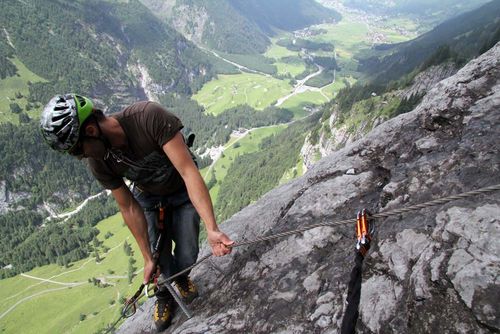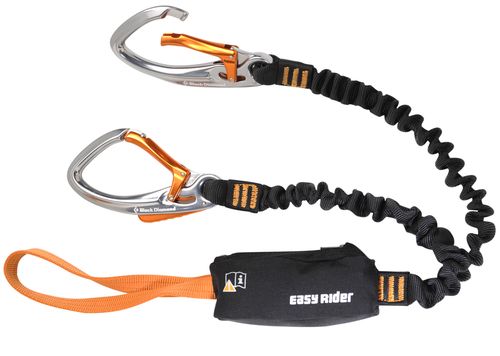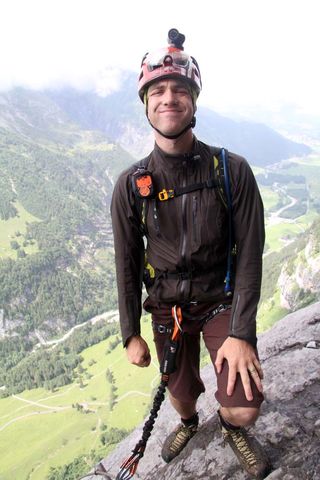
By
It is a foreign concept to most climbers in America. But in Europe, a mountaineering discipline called via ferrata — Italian for “iron way” — is an immensely popular way to get off the ground.
Developed during World War I as a method to move troops through the Dolomite Mountains in Italy, via ferrata routes add artificial features like ladder rungs, bolts, bridges, and cables to blank mountain walls.
Today, via ferrata is a bonafide sport in the Alps, where hundreds of routes grant access to cliffs and mountain peaks. On a recent trip to Switzerland, I clipped in to a via ferrata cable to give the sport a try.
I was visiting Engelberg, a mountain resort town south of Zurich. The route, an immense climb on Engelberg's Furenwand wall, snaked up a 2,000-foot limestone face.
Gear for via ferrata includes special lanyards that connect to a climbing harness and feature two shock-absorbing arms. A pair of locking carabiners sit at the end of each arm, ready to connect you to the climb.

In lieu of a rope, on a via ferrata you clip the carabiners into a cable that is affixed to the rock with anchor bolts. You climb and pull the carabiner-equipped lanyards behind, unclipping one 'biner at a time to pass each fixed anchor point.
On the Furenwand, the whole way up I stayed clipped into the cable. It was my backup parachute as I reached, stepped on the rock, pulled ladder rungs, and squirmed ever upward on the airy face.
I tested via ferrata lanyards from Petzl and Black Diamond, two major climbing-equipment companies. The Black Diamond Easy Rider kit, which has extendable, bungee-style lanyards and special squeeze-to-unlock carabiners, proved easiest to use. It costs $99.50.
Both the Black Diamond and the Petzl setup have built-in absorption systems. Expandable webbing is packaged in a small pouch where you knot the lanyard to your harness. The energy-absorption systems limit load impact in case of a fall, a crucial safety feature for this sport.

Two additional key pieces of gear included the Petzl METEOR III helmet and the La Sportiva Ganda Guide shoes. The helmet, which costs about $100 and weighs a feathery 235 grams, is all but unnoticeable on the noggin. But it has the requisite certifications to make it safe for mountaineering.
At $235, the Ganda Guides are pricey shoes. But for multiuse scenarios in the mountains — including long approach hikes combined with vertical climbs — this type of do-all footwear lets you leave an extra pair of climbing shoes at home.
In Engelberg, my group spent a couple hours climbing the Furenwand face. In the distance, a cable car winched on a line. Paragliders launched off the cliff above, swooping and flying for a thousand feet below our toes.
I followed a Swiss guide and kept clipped to the cable. Halfway up, I leaned back on a ladder rung to look down, a huge gap of mountain air below. On the blank face of the Furenwand, I was happy to be climbing the “iron way.”
–Stephen Regenold is founder and editor of .